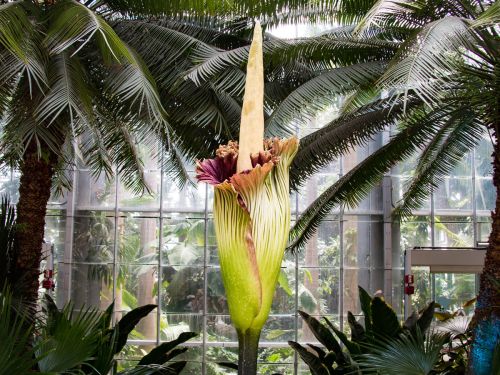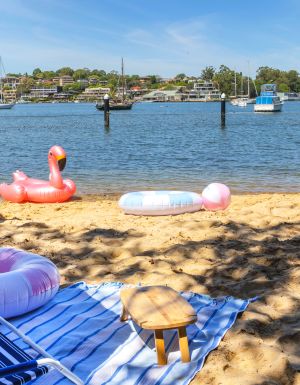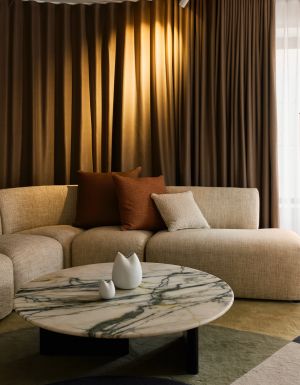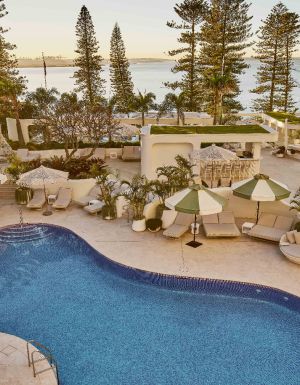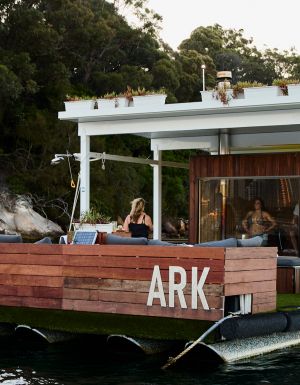It will be the first time the flower has opened in over a decade.
While a trip to the Botanic Gardens of Sydney is always a good idea, there’s an especially exciting reason to visit right now. One of the rarest flowers on Earth is about to bloom, a phenomenon that only happens every 15+ years.
The catch? It’s also the worst-smelling plant in the world, nicknamed the ‘Corpse Flower’ thanks to its vile odour. We speak exclusively to onsite horticulturalist Wayan ‘Eka’ Diana to learn how you can witness this extraordinary natural marvel, and if the smell really is that bad.

What is the Bunga Bangkai or Corpse Flower
Originating from the rainforests of western Sumatra in Indonesia, this rare and endangered plant species produces one of the largest flowers in the world. But unlike many floral varieties, it doesn’t bloom perennially or even annually.
The Bunga Bangkai at the Botanic Gardens of Sydney is named ‘Putricia’. This species flowers roughly once every two decades and can reach a staggering height of over three metres. In fact, it’s the tallest flower in the world, breaking records in 2010 after an inflorescence in New Hampshire measured 10 feet 2.5 inches tall.

The name comes from the Indonesian words ‘bunga’ – meaning flower – and ‘bangkai’, which roughly translates to ‘corpse’. This was no mistake either – the flower is most commonly known for its distinct smell.
Those lucky enough (or some may argue, unlucky enough) to witness the flower in full bloom have described it as pungent and fetid. Personal recounts range from the mildly unpleasant aroma of wet socks to the unmistakable stench of rotting flesh.

“The last time I saw it in full bloom was in Bali. It was really unpleasant, like the smell of a dead animal," Eka recalls when asked about the smell.
But equally reported on is the Bunga Bangkai’s immense beauty. With its huge, wine-red petals and towering yellow flower spike, it’s unlike any other flower on Earth.
When and where will it bloom?
The Corpse Flower is housed in the Ariod Glasshouse at the Botanic Gardens, arguably one of the best places to visit in Sydney. The peculiar plant has multiple offshoots, all in different stages of growth. And at the start of 2025, one limb in particular started showing signs of blooming.

Onsite horticulturalists conducted a series of tests, measuring the plant daily and consulting blooming patterns of Bunga Bangkai around the world before confirming the flower is preparing to open within the next week.
“It’s only a matter of days," says Eka. “We’re predicting it will begin to bloom at some point between today [16 January] and the 20th of January."

Those hoping to catch a glimpse should be quick though – once fully unfurled, the corpse flower only stays open for up to 24 hours before wilting. While it’s currently unavailable for public viewing, staff will generously move the plant to Palm Grove House when its bloom period begins, which will remain open from 8am to midnight to allow visitors to take full advantage of the short 24-hour bloom period.
With various Corpse Flowers in the collection, this will be only the fifth time one has blossomed at the Royal Botanic Gardens of Sydney, preceded by blooms in 2004, and an incredible double flowering in 2006, 2008 and 2010.
Keep a close eye on the Royal Botanic Garden’s website for live updates . We certainly will be!


